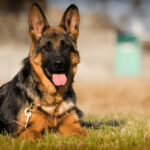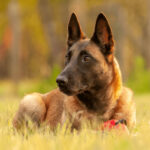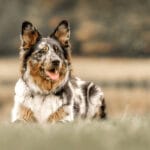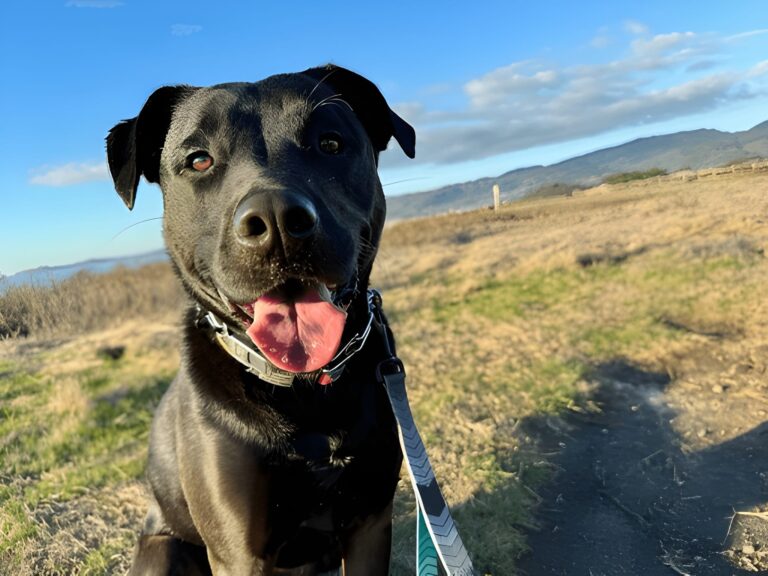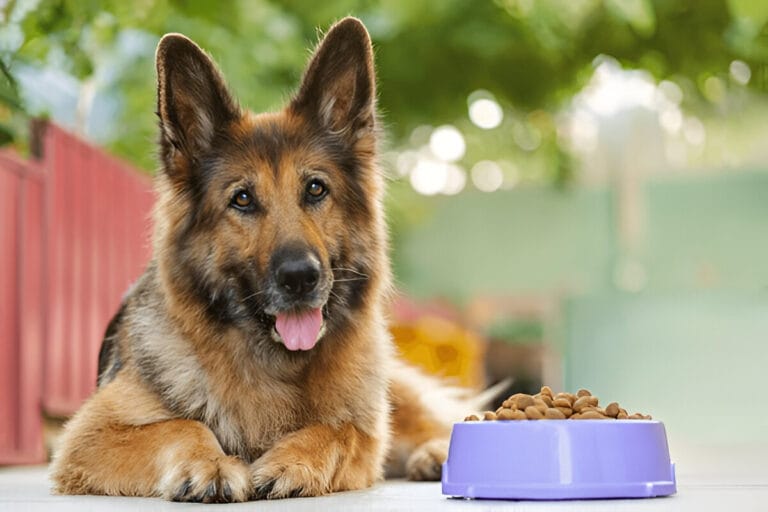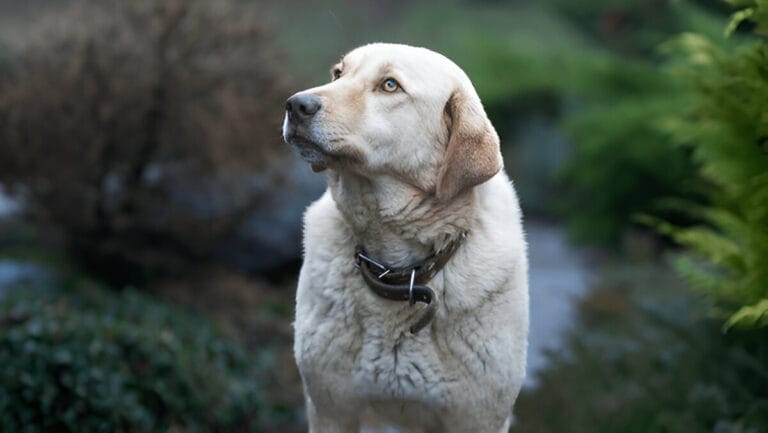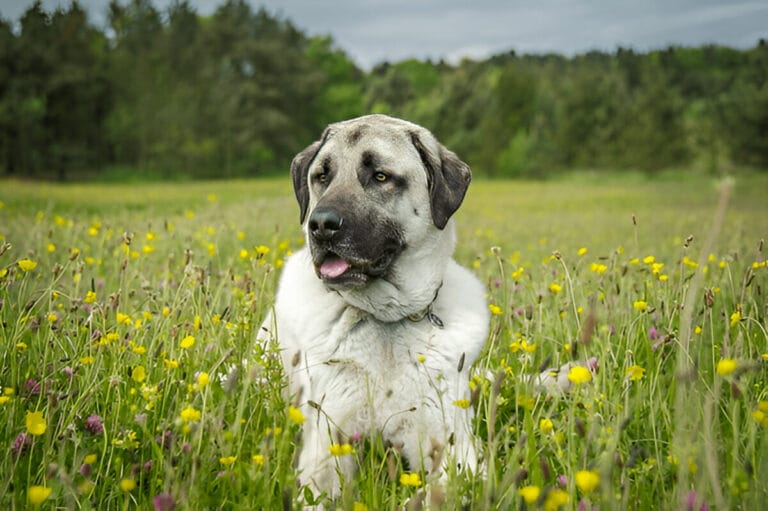German Shepherd Poodle Mix
When you combine two of the most popular breeds in the canine world, you get an absolutely amazing cross that’s captured hearts everywhere. The German Shepherd Poodle Mix, affectionately known as the shepadoodle, represents an interesting combination that brings together the best of both worlds.
This hybrid designer dog breed combines the positive traits from both parental lineages to offer individuals a faithful, loving pup that fits seamlessly into various lifestyle situations.
Having worked with these remarkable dogs for years, I’ve witnessed firsthand how this relatively new cross addresses the lack of certain qualities that some parent breeds might have individually, making them an increasingly popular choice for families seeking the perfect four-legged companion.
This comprehensive guide will provide you with a complete rundown of essential information about these remarkable dogs, helping you determine if this right cross aligns with your family’s needs.
The German Shepherd, originally bred in Germany and famously known for their regal bearing, served in their original role as sheep herders and continue to be a top choice for both working roles and family companions. Meanwhile, the Poodle hails from a background where they were bred to retrieve downed ducks from frigid waters, showcasing their elegant and pretty face along with their distinctive coat.
When these two remarkable breeds combine, they create common attributes that generally rely on medium to large stature (typically ranging from 40 to 90 pounds), chart-topping intelligence, exceptional trainability, and seemingly endless energy levels paired with deep affection.
This standard hybrid perfectly embodies the loyal, hard-working, and intelligent nature while often being hypoallergenic, making them smart and playful companions with strong body, mind, and spirit qualities that make them ideal for those looking to adopt a truly special dog with diverse temperament, striking appearance, and manageable needs.
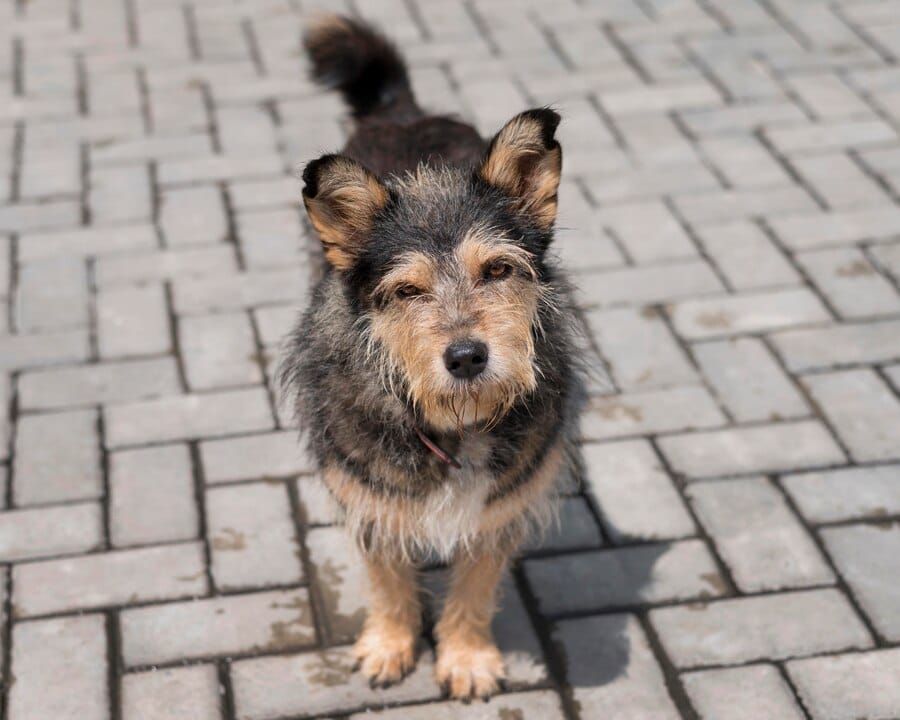
Photo credit: Freepik
A Quick Look at German Shepherd Poodle Mixes
These quick facts about the German shepherd poodle mix will help you understand the basics of what makes this crossbreed so special. In terms of appearance, expect a Weight ranging from 25 to 90 lbs with a Height that typically spans 13 to 26 inches, making them adaptable to various living situations.
Their Coat Type is generally Thicker and longer, typically presenting as wiry or straight depending on which parent they favor more, while their Grooming Needs require regular attention to maintain their beautiful coat.
From my years of working with these remarkable dogs, I’ve observed their temperament consistently showcases traits that are Intelligent, loyal, affectionate, and notably active, making them excellent companions for families who enjoy an engaged lifestyle.
With proper care, you can expect a Lifespan of 10 to 14 years of devoted companionship, during which these amazing hybrids will demonstrate the perfect blend of their German Shepherd and Poodle heritage in both their physical characteristics and their wonderfully balanced personality traits.
What’s the Background of the German Shepherd Poodle Cross?
The German Shepherd Poodle cross showcases an intriguing blend of two distinguished working dog lineages, combining generations of purposeful breeding expertise. This relatively newer breed can be first traced back to the 1960s when it was initially bred for military and police work by the United States Army, and is still used in this capacity today.
In recent years, this remarkable cross has gained tremendous popularity among families who lead an active lifestyle, thanks to its protective yet affectionate nature that fits well with modern family dynamics.
The mix displays incredible traits from both parent lines, showcasing a temperament that’s loyal, loving, and hard-working – qualities that make this breed one that loves to learn new things and remains intelligent and eager to please owners, making it a great choice for those seeking a dog for service or companion animal roles.
While little is known about exactly where this hybrid originated, we do know that both parent breeds have rich histories that contribute to the shepadoodle’s exceptional qualities.
Poodles were originally hunting dogs in Germany before becoming the national dog of France, while German Shepherds have another long resume working with militaries and police departments around the world.
The day the first documented doodle cross, the Labradoodle, appeared in the 1980s, demand for designer dog crosses took off, which led to increased interest in crossing poodles with other breeds – and as you might have guessed, shepherds were a natural choice.
Despite their intelligence, easy trainability, and exceptional learning abilities with commands, the American Kennel Club doesn’t recognize the shepadoodle as an official breed, meaning there are no guidelines for appearance or formal registration requirements, though this popular hybrid is steadily gaining recognition as the perfect high-energy family companion.
What Do German Shepherd Poodle Mixes Look Like?
The appearance of a German shepherd poodle mix can vary significantly based on which parents contribute more dominant traits, but Mostly you’ll find these dogs fall into the medium to large size category, standing between 13 to 28 inches tall and typically weigh anywhere from 25 to 90 pounds.
From my experience working with these remarkable hybrids, their face often features a longer snout inherited from the German Shepherd side, paired with dark, alert eyes that showcase their intelligence and attentiveness.
Additionally, most pups will have floppy ears and a distinctively wiry or shorter coat that’s making them hypoallergenic and low-shedding compared to other breeds – a trait that’s particularly appealing to families with allergies.
Their color variations are quite stunning, ranging from solid black, grey, or brown coats, and sometimes you’ll see beautiful tan and white combinations, with many mixes displaying attractive bi-color or even tri-color patterns that make each dog truly unique and eye-catching.
What Size Is a German Shepherd Poodle Mix?
A German Shepherd Poodle cross is usually a medium to large-sized canine that may weigh anywhere from 25 to 90 pounds and measure between 13 to 28 inches in height, depending on which parents contribute the most dominant size traits.
What Kind of Coat Does a German Shepherd Poodle Cross Have?
A German shepherd poodle mix often has a short, wiry coat thanks to their genetics from the standard poodle side, which tends to come in shades of black, brown, or grey colors and is considered low-shedding compared to other dogs, though Occasionally you’ll find some with longer, scruffy, thick, or straight hair depending on which parent’s traits dominate.
Do German Shepherd Poodle Mixes Bark a Lot?
A German shepherd poodle mix is a relatively quiet dog that’s unlikely to bark a lot under normal circumstances, However they can be fairly protective and will use their sense of when there’s a threat or when they’re trying to alert you to something they deem important, making controlled barking part of their vocal communication rather than excessive noise.
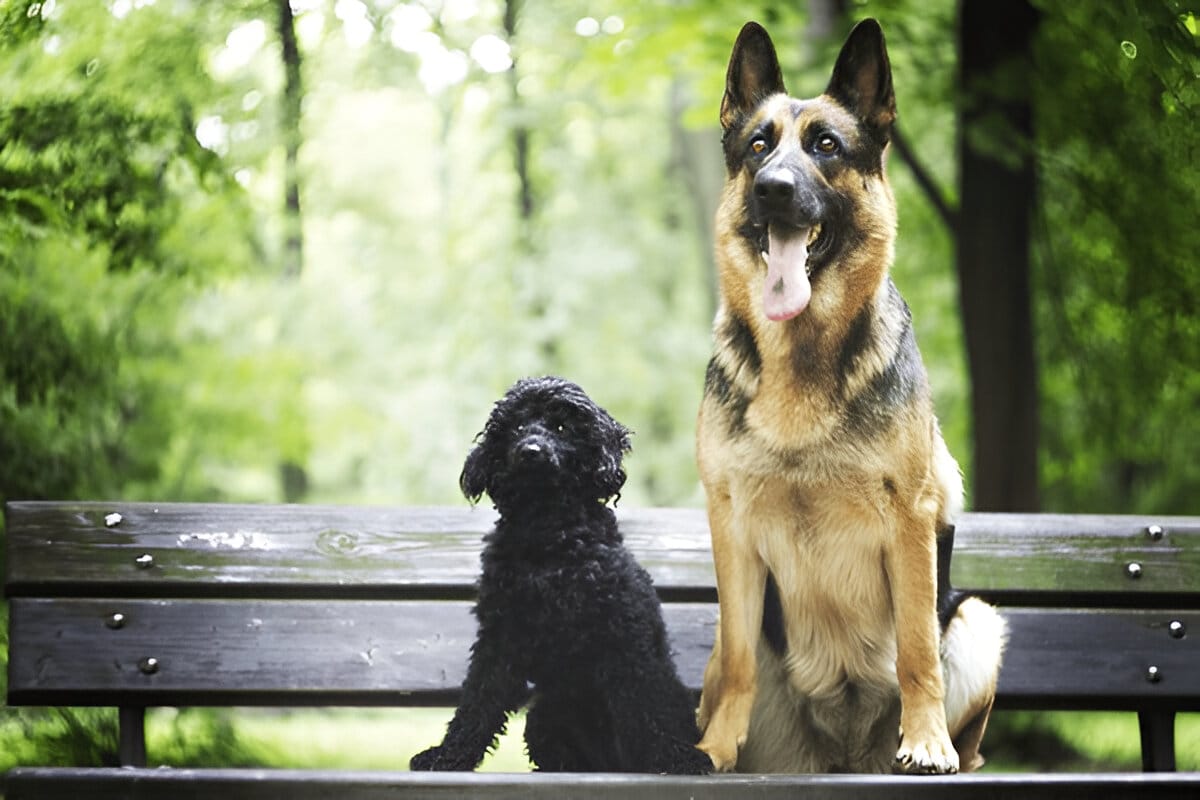
Photo credit: Shutterstock by Best dog photo
What Is a German Shepherd Poodle Mix Temperament, Appearance?
Temperament
German shepherd poodle mixes are known for their exceptional intelligence and high-energy nature, with each pup showing a range of temperatures and personality factors that reflect their temperaments from both parents.
As part of their inherently loving, loyal, and protective traits toward families, this mix learns quickly and loves to spend time outdoors with the family just as much as indoors cuddling on the couch.
Make sure to note that this dog breed will require a good amount of exercise to stay both healthy and happy, because without proper mental and physical stimulation, they can become anxious and even destructive – something I’ve witnessed firsthand when working with these remarkable hybrids who thrive on engagement and activity.
Appearance
Similar to their German Shepherd and Standard Poodle ancestry, Shepadoodles are substantial canines that at maturity usually measure 22 to 28 inches in height and tip the scales at 60 to 90 pounds, though this marks the limit of predictable traits in mixed breeds.
These pups can look totally different from one another depending on which parent they take after more – Many display shepherd-like coats that are coarse and dense in black and tan color schemes, though Poodle characteristics can certainly emerge as well, according to Sally Hammond, who directs Doodle Dandy Rescue in Texas.
“Do get some with curly coats, but she notes they’re almost never truly hypoallergenic despite the dog lineage suggesting less shedding will occur than pure shepherds shed. Though the common black and tan combination dominates, you’ll also find ones with different-colored coats including white, cream, and fawn variations that showcase the beautiful diversity this crossbreed offers.
Caring for a German Shepherd Poodle Mix
A German shepherd poodle mix will need proper care throughout their lives to ensure they stay happy and healthy, so make sure your dog gets at least an hour or two of exercise each day and receives daily walks for basic fitness.
These mixes should also have plenty of toys to play with both inside and out, and in addition will benefit from consistent training on a regular schedule to increase obedience and provide essential mental stimulation. From my experience working with these remarkable hybrids, they require a diet of high-quality food that’s tailored to their caloric intake needs, and owners must attend regular vet visits to ensure their health is always in good condition.
The shepadoodle needs both their muscles and brain engaged since this breed excels at agility and flyball, and Hammond suggests incorporating nose work for these dogs in either formal or relaxed environment – “Bring them outdoors on a lead and allow them to investigate various scents,” she advises.
Training is absolutely crucial because not only are shepadoodles highly intelligent and eager to learn new skills, but without adequate mental challenges they get bored and exhibit unwelcome behaviors like chewing and excessive barking.
This very smart crossbreed requires strong leadership, and I can’t emphasize enough how important it is to get a professional trainer since this creates a critical bond between pup and parents – all successful training should use positive reinforcement methods that reward good behavior.
Another constant responsibility involves grooming, Whether your dog inherits flat, coarse coat or curly locks, they’ll need brushing several times per week to help curb shedding and occasionally professional grooming to keep their coat in tip-top shape.
Remember that keeping up with nail trims, routine dental care, and monthly preventives to protect against fleas, ticks, and heartworm disease are all essential parts of caring for these active dogs. If you have a curly-coated shepadoodle, you’ll need regular appointments with a groomer too, since their coat requires more specialized attention.
Check and clean his ears regularly, especially if your dog spends a lot of time swimming or in wet conditions, as this helps prevent infections and keeps your beloved companion comfortable and healthy.
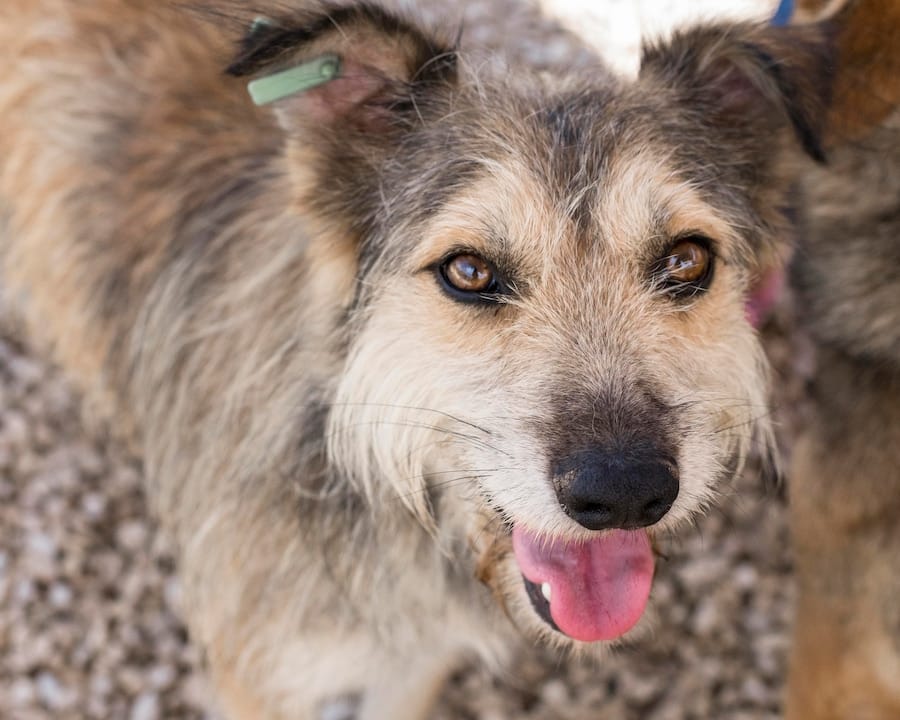
Photo credit: Freepik
Shepadoodle Health Issues
Both German Shepherds and Poodles are typically robust breeds with lifespans of 12 to 14 years and 10 to 18 years each, so the Shepadoodle’ s life expectancy usually ranges within this range. But like all dogs, these two parent breeds are prone to certain health conditions that can be passed down to their puppies.
Bloat
Bloat occurs when dogs accumulate gas or food that cause their stomach to expand dangerously, and Sometimes this progresses to a serious condition called gastric dilatation-volvulus or GDV, where This occurs when the dog’s stomach rotates and blocks circulation from the spleen, resulting in an agonizing and potentially fatal medical crisis.
This ailment occurs more frequently in big, barrel-chested breeds like German Shepherds and Standard Poodles, so Shepadoodle owners should recognize the danger signals: Gagging or unproductive heaving without actually vomiting, a Swollen abdomen that feels tight to the touch, Sudden anxiety and pacing with an inability to get comfortable, excessive Panting and drooling, and in severe cases, Collapse – all of which require immediate veterinary attention since this condition can be fatal within hours if left untreated.
Hip Dysplasia
Hip dysplasia is a condition in which the hip joint doesn’t develop properly, leading to a loose connection that often results in osteoarthritis as dogs age, and this disease is more common in large breeds including both of the Shepadoodle’ s parents. Mild cases can often be treated with anti-inflammatory medication and physical therapy, but severe instances may require surgery to correct the problem and restore mobility.
Common signs pet owners should watch for include Limping or favoring one leg, Reluctance to get up from lying down or jump onto furniture, Shifting weight toward the front legs when standing, noticeable Loss of muscle mass in the back legs, and general pain or stiffness during movement – all symptoms that warrant immediate veterinary evaluation since early intervention can greatly enhance your dog’s well-being and movement abilities over time.
Elbow Dysplasia
Elbow dysplasia is similar to hip dysplasia and describes when the elbow joint develops improperly, and It’s one of the most common causes of osteoarthritis in dog elbows, with German Shepherds being predisposed to this condition.
Like hip dysplasia, anti-inflammatory drugs can help manage pain and inflammation, but surgery is often recommended before severe arthritis develops, and Common signs include Limping especially after exercise, Reluctance or unwillingness to walk normally, noticeable Stiffness in the front legs, and a Grating or crackling sound from the elbow joints during movement.
Degenerative Myelopathy
Degenerative myelopathy or DM is an inherited, progressive disease of the spinal cord that’s similar to Lou Gehrig’s disease (ALS) in people and disproportionately affects German Shepherds, with Dogs suffering from this condition typically not showing signs of illness until they’re 8 years old or older when symptoms often start in one back limbs and then progress to include others.
These warning signs include Difficulty getting up from lying down, noticeable Weakness in the legs, Uncoordinated movements during walking, gradual Muscle loss in the hindquarters, and Scuffed toenails plus wounds on the top of paws from dragging feet along with secondary infections from loss of feeling. While there are ways to manage symptoms through supportive care like physical therapy and mobility aids, there isn’t a cure for this heartbreaking condition.
Idiopathic Epilepsy
Epilepsy is a brain condition that causes recurring seizures, and Idiopathic epilepsy specifically refers to seizures with an unknown cause that are common in both Poodles and German Shepherds.
Epileptic episodes tend to last from one minute to two minutes and warning signs can include loss of consciousness, uncontrollable spastic muscle movements, and involuntary urination or defecation, with Lifelong medication typically used to manage the frequency and severity of these episodes.
Sebaceous Adenitis
Poodles are prone to an inflammatory skin disease called sebaceous adenitis, with Symptoms that include Hair loss, unpleasant Odor along the hairline, Small clumps of matted hair, a Dull, brittle, and coarse coat texture, excessive Scratching, White scales on the skin, and Clusters of lesions typically found on the head and neck area.
Treatment depends on the severity of the condition but may include oral medications and topical products such as sulfur and salicylic acid-based shampoos to manage inflammation and restore skin health.
Von Willebrand Disease
Von Willebrand disease (vWD) is a genetic blood disorder that while rare overall is more common in Poodles, and The condition causes a deficiency in von Willebrand factor, a protein that helps platelets stick together to form a clot when bleeding occurs.
Affected dogs may have difficulty clotting, which can lead to excessive bleeding from the nose, vulva, bladder, or gums, and Dogs with this condition also bleed for a long time during and after surgery. Most veterinarians recommend testing for VWD before any planned procedures such as spay or neuter procedures to ensure proper preparation and blood clotting support during surgical interventions.
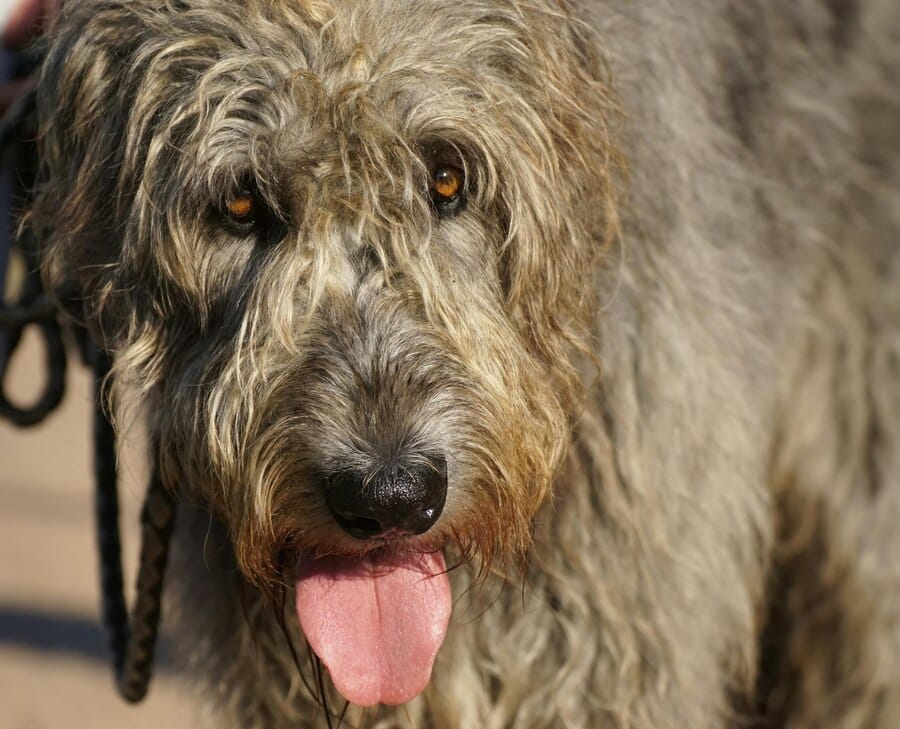
Photo credit: Freepik by EyeEm
German Shepherd Mixed with Poodle and Families
A notable trait of Poodles mixed with German Shepherd dogs is their strong attachment to kids, making these highly family-friendly companions that genuinely enjoy the company of little ones. As a responsible adult, you’ll need to maintain a keen eye on child-dog-small animal interactions and it’s important to set a positive example for children on how to treat the dog with respect and love.
These pups may crave significant attention from their family members, so you should set aside some quality time to attend to their emotional needs because this will contribute to preventing the development of separation anxiety issues that these intelligent hybrids can be subject to without proper bonding.
The early socialization process will help in achieving better adjustment and fostering a more loving family dynamic with your shepadoodle.
The socialization should ideally start around 2 to 1/2 weeks of age when puppies begin developing their senses, as It helps them distinguish between good and bad stimuli and emotions while also helping make them feel at ease in any new environment, especially when you acquire them from another home.
These remarkable crosses make a wonderful addition to your household since they would bring tremendous excitement to the household and they naturally cultivate a spirit of closeness that strengthens family connections and builds cherished experiences for all participants.
3 Reasons Why You Should Get a German Shepherd Crossed with Poodle
Your pet will inherit this trait of being naturally protective from both parent breeds, as the dog has innate loyalty toward owners but It tells a different story when It comes to strangers. This crossbreed tends to be wary of unfamiliar faces, which paired with their natural wariness makes them an amazing watchdog, plus The offspring will ultimately inherit remarkably intelligent nature making them easy-to-train as Your pet becomes eager to learn new techniques. It can be a great wonderful family companion that’s pleasant to live with since kids love being around them and they help by watching over your kids.
3 Reasons Why You Shouldn’t Get a Poodle German Shepherd Mix
This mix requires a high level of activities which may be a disadvantage for people who leave the house often and prefer staying at home, as This trait is not appropriate for every owner, especially those with sedentary lifestyles, as this crossbreed may develop destructive and troublesome behaviors when under-exercised or lacking mental engagement. Hypo-allergenic quality is not assured despite common belief, as The reason behind this involves science of crossbreeding where There might be offspring that could possess shedding characteristics, and It is recommended to train them early to discourage problematic behaviors which new well-informed owners should know also take a lot of time for proper development.
Fun Facts
shepadoodle isn’t the only popular and loved German shepherd mix as There’s also the Gerberian shepsky with husky, golden retriever sheprador with Labrador, and There are a lot of poodle mixes out there too including Golden doodle cross, Berne doodle from Bernese mountain dog, and Yorkie-poo from Yorkie.



